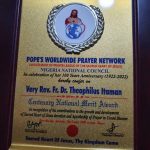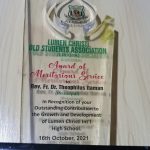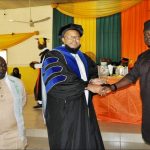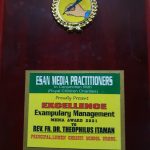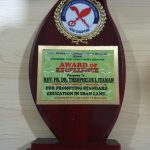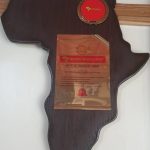Fr. TI’s Bio Rev. Fr. Dr. Theophilus Itaman (Fr. TI) is a Catholic Priest of…
The debate on the effect of nature and nurture on human behaviour and development has been an age-long issue. In human development, researchers believe that both nature and nurture influence language development in children (Kennison, 2005). However, some researchers maintained that nature contributes only 4% to a child’s language development (Kennison, 2005). The first word spoken by a child at the age of 12 months indicates that the development of language is in process (Kennison, 2005). However, right from the womb, the child learns the language based on what is happening around the mother. In the same way, children learn the language after birth based on what is in the environment. In supporting this assertion, research carried out in 1980 by DeCasper and Fifer indicated that shortly after birth, children prefer to hear the sound from the mother than that of strangers (Kennison, 2005).
Still on the assertion that the environment is significant in the language development of children, finding from research conducted in 1988 by Jacques Mehler and colleagues maintained that newly born children (4 days old) treat language spoken by the mothers as familiar (Kennison, 2005). A more compelling finding by DeCasper and Spence in 1986 reported a case of a group of pregnant mothers, made to be reading a book aloud by Dr Seuss and another control group that never read the book. After birth, it was discovered that children from mothers who read the book prefer hearing familiar stories to other children (Kennison, 2005). These findings imply that sounds from the environment and spoken language in the environment influence language development in children. Many environmental factors influence a child’s language development, ranging from sound, language spoken by the mother and those around, and instruction from the mother, teachers, and peers (Kennison, 2005). Studies have suggested that nurture builds on nature.
Research indicates that children can distinguish syllables in speech based on frequent usage. Research by Peter Jusczyk and colleagues indicated that children of 9 months could distinguish single syllables that are frequently used from the ones that are not frequently used around the children. The finding suggested that children’s ability to recognise two syllables sequences depends on the frequency with which it was used in the speech stream played for the infants during the study. It suggests that environmental factors influence the development of language in children. Also, children’s first words are the names of persons or things in the environment, like mama and dada. Often, children master sounds more quickly than others (Kennison, 2005). Where there is a difficulty, speech therapy is used to correct it. The implication is that humans and the environment greatly impact and influence language development in children.
In building vocabulary, children learn words that connect with their environment. That explains why children have more words, which are nouns, than verbs and adjectives (Kennison, 2005). They learn these words with the aid of their parents and adults with them. Adults play a vital role in the process of children learning the language. They teach the children that a word refers to the whole object rather than a part of it and the proper usage of different words in different contexts. A study by Edward Klima and Ursula Bellugi suggested that children learn word order in a sentence and the use of negative sentences in progression and in stages, influenced by the adult (Kennison, 2005). Also, children born with hearing impairment, when exposed to sign language early enough, will develop sign language in a manner in which children develop spoken language influenced by the environment. In supporting the role of environment in language development, a study by Victor of Aveyron indicates that poor nutrition, absence of sensory stimulation, and lack of contact with any social environment contribute to the development of language in humans (Lebrun, 1980). The implication of these findings is that environment and those within that environment are capable of influencing language development in children.
A study carried out by Noam Chomsky reported that children are born with a language acquisition device (LAD) which has the essential properties of all available human language (Kennison, 2005). The argument implies that learning of language is innate in children. This was further supported by research carried out by Myma Gopink and Martha Crago, which indicated that language impairment (SLI) is inheritable in a family (Kennison, 2005). They observe that a gene may be responsible for the language disorder in the family. In support of this assertion, the finding from a study of Victor of Aveyron by Itard reports that every child has an innate ability to imitate (Lebrun, 1980). However, the opponents of this argument maintained that language is learned like any other form of learning. Its development depends on the exposure a child receives. Researchers like Steven Pinker have suggested that there is a critical period for language learning, from birth to age five. When a child does not get the right exposure at this critical period, learning of language tends to be difficult to acquire like a native speaker. It also means that age plays a major role in the rate children learn languages.
In supporting the assertion that language acquisition depends on the exposure given to the children, Mason reported a case of a child locked up for 6 1/2 years with a deaf mother and was found to be speechless (Lebrun, 1980). However, after two years of exposure and training, she could express herself verbally, sing, and recite poems. She learned the language slower because she started to learn at the age of 6 1/2. This indicated the vital roles of environment, socialization, and age in language development in children.
In conclusion, this chapter suggests that both nature and nurture play different roles in language development. It is the case of nurture building on nature for effective language development in children. To a great extent, this chapter demonstrated that the environment in which a child lives and the exposure the child gets play a significant role in the language development of such a child.






